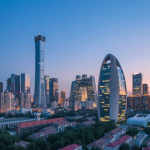
The changes can be seen online and in every magazine you pick up: Gadgets are taking over our lives and you embrace it, right? But are you aware of how these changes affect your city too?
Take a moment and you’ll see how cities today are slowly changing, not simply because of growth but because of technology. If it hasn’t started in your neighbourhood yet, it will probably come soon.
What should you look out for and are these good changes? We investigated to help you prepare for it.
What is an Advanced City?
Have you heard one of these terms recently?
- Electronic communities
- Telecity
- Wired city
- Flexicity
- Intelligent city
These are all terms for communities that start functioning differently than traditional cities. What is the one central thing that emerges from these names? Why are they labelled this way? Technology.
Smart and advanced cities harness the power of technology in areas such as communication, data collection and infrastructures to help communities function better.
A major driving force behind building an advanced system is to enable more dynamic communication between governments and citizens. People are seen as assets and a lot is done to improve their experiences in the city. The exciting new chapter in city development is to better serve citizens but it also benefits other areas such as the environment.
So what does this look like?
How Technology and Innovation Will Change Your City
When you incorporate technology in your kitchen it usually means smaller devices that take up less counter space. And of course you get things done more efficiently. Can the same be said for cities?
Gardens and Green Spaces
Of course you can’t necessarily cut back on what space a city already uses. In addition most communities—and the world’s population—grow so there will always be a need of more housing and buildings.
But that doesn’t mean there has to be fewer gardens and green spaces around. Instead of looking for more floor space your advanced city may acquire more vertical space for gardens. This means trees and gardens on top of buildings, on the sides of apartment buildings & innovative agriculture in populated areas.
While this is a practical approach it’s also necessary. The unfortunate by products of industry and technology, such as smog, need a solution. Somehow your Smart city will have to incorporate more greenery.
Traffic & Transportation
What’s the thing most citizens dread about living and working in a large city? We love being part of the hub of business, entertainment and people but we wish we could avoid traffic, right?
A smart approach to traffic is a major part of modern Smart cities. The benefits technology offers can be accessed in many ways:
- A more appropriate public transport system. This motivates people to use this rather than their own vehicles.
- The foundation of smooth flowing traffic is well managed intersections. Advanced cities use sensors and information sent via citizens’ SmartPhones to gauge traffic conditions and make adjustments to traffic lights when necessary or give people tips on how to avoid traffic via an app.
- Major challenges to smooth flowing traffic are those individuals that are looking for parking spaces. Drivers behind them need to stop every time they’re hesitant about where to go. Why try and see where you can park if an app can tell you exactly where to go? With Smart parking you can view available parking, book parking and even pay for it online. You’ll know exactly where to go. You’ll be surprised how these small changes affect flow.
- AI and machine learning can be used to detect problems such as accidents. This is made possible simply by counting cars and analyzing flow. The bonus is it can all be activated via an existing CCTV system that already exists at most intersections. Faster problem detection means authorities can act faster and eliminate the problem as soon as possible.
The truth is that cities have the equipment to manage traffic but data enables them to do it faster. Advanced cities will be driven by data.
Lights
Don’t you love looking at city lights at night? Once again this feature is synonymous with cities, but it’s not without problems because lights—such as street lights—use a lot of power.
Smart lighting leads to more effective use of electricity thanks to:
- LED lights rather than traditional globes
- Solar powered lights so there’s less pressure on the grid
- Movement sensors allow lights to go on only when necessary
The other reason this is an exciting part of futuristic cities is that street light poles will often be used as the infrastructure to place internet access and sensors across the city.
Talking to Your Local Government
In a technologically driven world we often fear that society will become impersonal and people will become disconnected from others. If we use technology correctly however we’ll see the opposite manifests. We simply need to use tech smartly.
Advanced cities become more empowered to engage with their citizens. They build an infrastructure with which they can obtain information from citizens. This is made possible via Wi-Fi stations throughout the city, applications accessible through SmartPhones and various ways of getting feedback from across the city such as traffic sensors.
This data is beneficial to local government because they can gauge what their people need and act accordingly. The benefit to citizens is that they have more access to the internet and they have additional options to engage with their local councillors.
Can you see the benefits in store for everyone involved? From the environment to people to local councillors: Some of the most challenging situations you face at the moment can be obliterated if only we use the wonders of technology correctly. Will you now prompt your local government to be at the fore front of this transformation?












